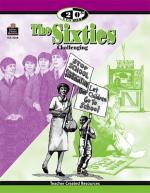|
This section contains 950 words (approx. 4 pages at 300 words per page) |

|
Postwar Modern.
The furniture of the 1940s and 1950s, particularly after World War II, was based on the modernist aesthetic — it was rationally designed and functional. Not that it was necessarily boring: unlike many examples of modernist furniture before World War II, the furniture of the late 1940s and the 1950s was often exciting, with lively colors and patterns. Still, it was inherently functional. Furniture was designed first and foremost to be efficient, enabling people to sit, sleep, eat, or store their belongings. Modernist furniture designers took design ideas of the late-nineteenth-century and early-twentieth-century Arts and Crafts movement, as well as certain motifs of early-twentieth-century Art Nouveau and Art Deco, and incorporated them into the modernist vocabulary of rational function. Influential in furniture design of this period was the ideal of a masterfully planned living environment. From the Arts...
|
This section contains 950 words (approx. 4 pages at 300 words per page) |

|




